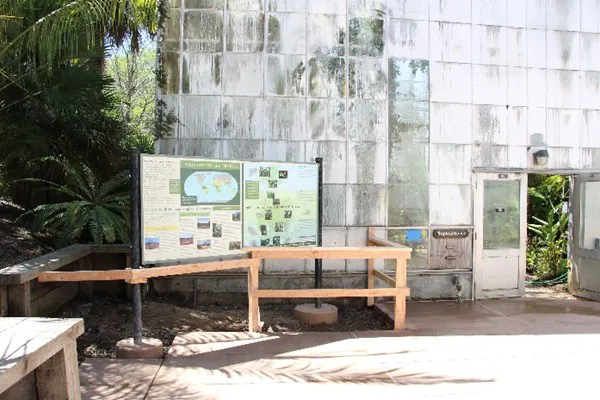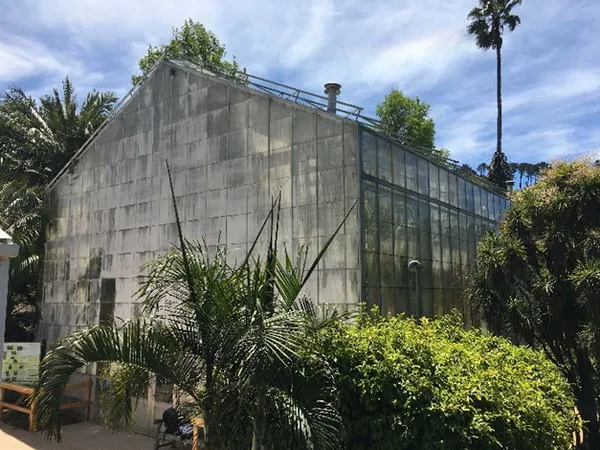In 2022, the University of California (UC) Berkeley Botanical Gardens reached out to Prospiant for help implementing improvements to their tropical greenhouse, an old Ickes Braun structure with glazed glass. Around 1971, the Botanical Gardens applied "liquid shade" (a white latex paint) to reduce solar gain and help keep the greenhouse cool. A safety review had raised concerns about the spray shade run-off, the application and removal means, and methods of the spray shade, along with the slipping and broken glass. At that point, the garden contacted Prospiant's Maintenance and Renovation Division, seeking options.

Prospiant recommended replacing the glazing (the glass) and the glazing system (the aluminum bars that hold the glass to the structure) with its TECHLITE system, which holds 16 mm acrylic panels.
Once on-site, Prospiant project manager Ryan Dempsey suggested several different options. The original design included a clear panel at the bottom half of the vertical walls. However, the customer was concerned about the potential of algae as well as the significant amount of x-bracing needed, so they selected light white acrylic on all surfaces.

Part of the job included lowering the sidewall vents from the eave height to the plant level. The TECHLITE system allows for larger vent areas, which provide for more passive cooling capacity. Originally, the greenhouse had a rigid shade system on the roof, with a large fixed screening. To utilize this system, the garden crew would have to climb onto the roof to install these additional rigid shade screens. Using the light white acrylic not only eliminated the need for any annual shade application and removal but also reduced solar gain, annual maintenance, and improved passive cooling capabilities.
"Even with the greenhouse installation crew being new to this technology, it went as smooth as a project can go," said Dempsey.

Another requirement of this project was that it needed a seismic upgrade, as all Berkeley properties must now be seismically reinforced. This was one of the first renovation projects to incorporate such an upgrade, which included the aforementioned x-bracing inside the structure to help support the building in the event of an earthquake.
Because work began at the beginning of the pandemic, the team faced — and overcame — various operational challenges such as social distancing, wearing masks at all times, and understanding and meeting changes to local requirements. In addition, they had to maneuver the 20' long acrylic panels and extruded material through narrow pathways within the botanical gardens without damaging plants.
Rob Tanzer, business manager for the Prospiant Institutional Group, said, "Removing glass panels and replacing them with the TECHLITE glazing system is one of our specialties, and we've done it quite often, and as we did here very successfully."



Left: before, right: after.
For more information:
University of California Berkeley
www.berkeley.edu










